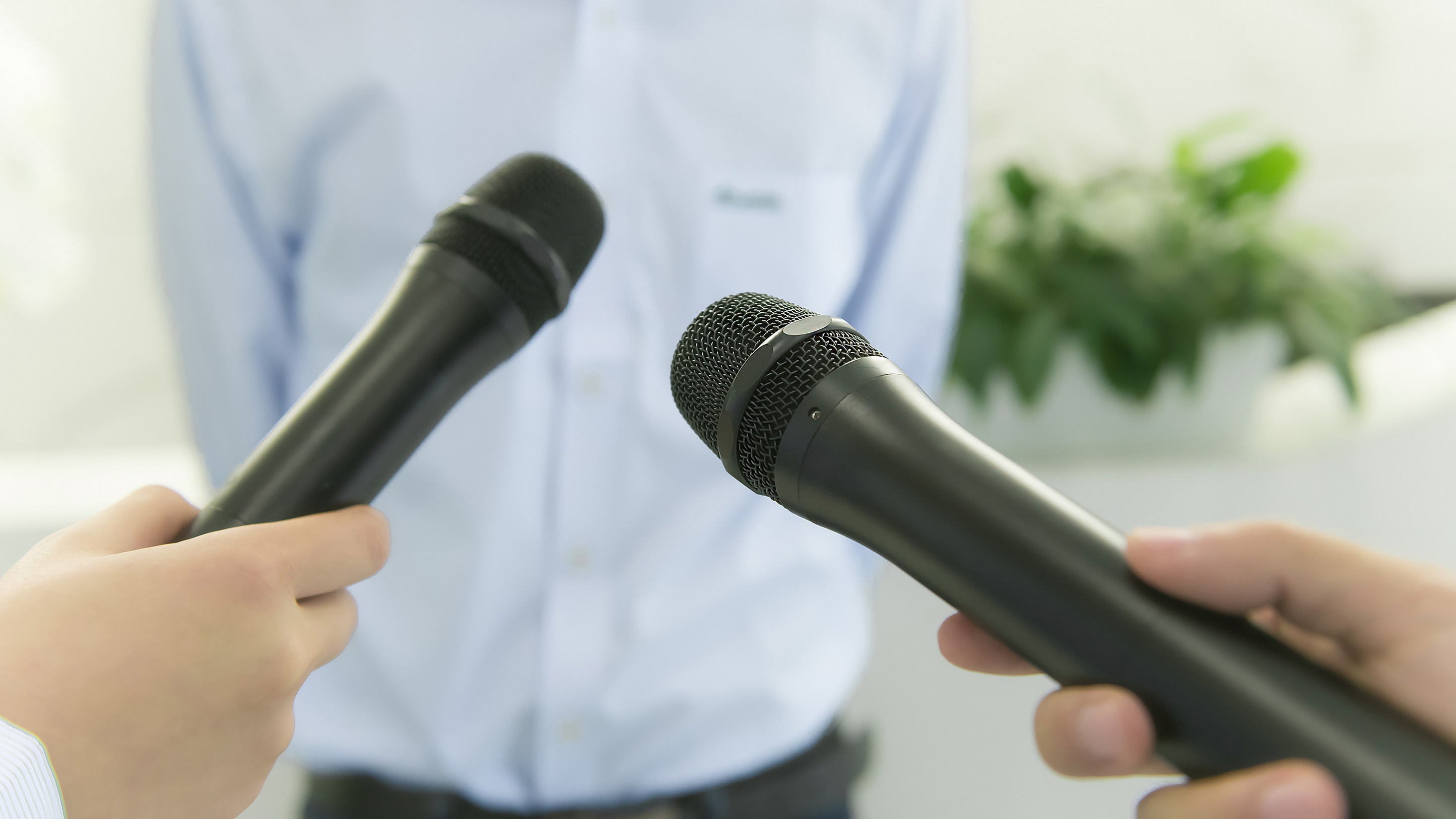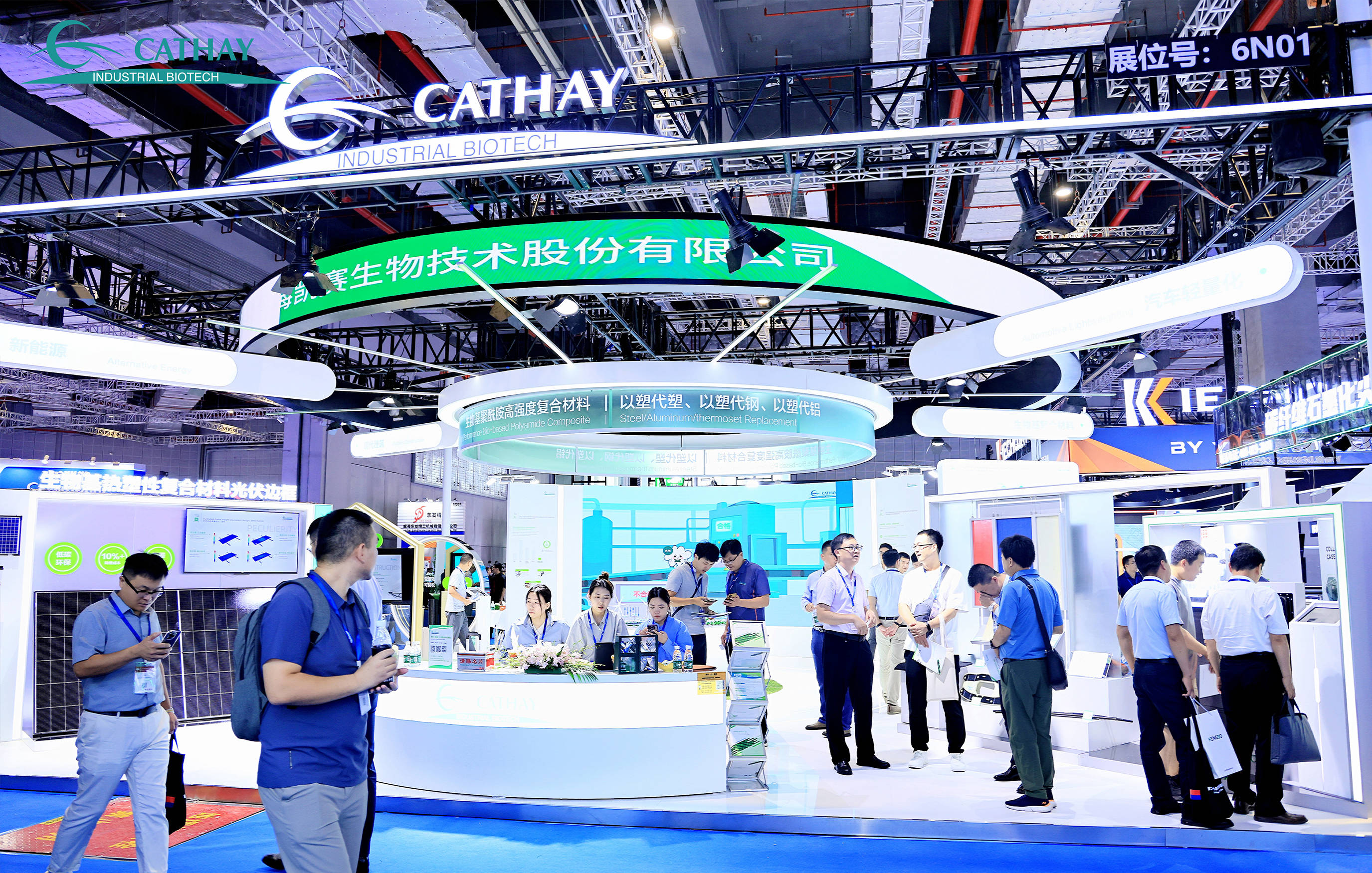SNEC 2024 | Cathay Biotech's Bio-based Composite Materials Connect to a Green Future
Source: Cathay Biotech Inc.Publisher: Cathay Biotech Inc.Date: 2024-08-13Read: 5460
Cathay also showcased several key products of their bio-based thermoplastic composite solutions. These products are not only environmentally friendly and cost-effective, but also exhibit superior performance. Additionally, the thermoplastic nature of the materials supports recyclability and reuse.
Supporting Photovoltaic Frames
Lightweight, Weather Resistant, and High Strength

Photovoltaic energy is one of the most cost-effective and widely used renewable energy sources. The photovoltaic frame is a crucial component that fixes and seals the PV modules. Thus, it significantly impacts modules’ lifespans and has high-performance standards on materials.
Cathay Biotech's bio-based polyamide continuous fiber-reinforced composites offer superior specific strength and tensile strength compared to the mainstream aluminum alloy frames on the market. Cathay’s materials are low-carbon, eco-friendly, cost-effective, highly weather-resistant, lightweight, insulating, and aesthetically pleasing. They are suitable for harsh environments like deserts and offshore locations, as well as aesthetically demanding applications such as Building-Integrated Photovoltaics (BIPV) and Building-Applied Photovoltaics (BAPV). With cost and weather resistance advantages, these materials can seamlessly replace current aluminum frames in all scenarios.
• Carbon Footprint: Over 80% carbon reduction compared to aluminum.
• Cost Efficiency: More than 10% cheaper than aluminum frames.
• Weather Resistance: High durability without coatings, resistant to impacts and scratches.
• Performance: Resistant to humidity, acids, alkalis, and salt spray.
Supporting Wind Power Materials
Enhancing Efficiency, Lightweight and Stable

Another significant area of renewable energy is Wind Power, which has been widely adopted globally. Wind turbine blades, which capture wind energy and convert it to electrical power, are a key component of the wind turbine. Currently, wind turbines are evolving towards larger and lighter designs, placing higher demands on materials for strength and stiffness, especially for the construction of ultra-long blades.
Cathay Biotech's bio-based polyamide continuous fiber-reinforced composites provide tailored material solutions for various wind turbine components, such as blades (spars, webs), and nacelles. For nacelles, Cathay’s composites offer excellent mechanical properties, weather resistance, and chemical resistance, improving the wind turbine’s quality and reliability in harsh weather conditions. For blade spars, Cathay’s continuous fiber-reinforced bio-based polyamide pultruded panels effectively reduce weight while providing excellent fatigue and mechanical performance, capable of withstanding extreme weather conditions and random loads. For blade webs, combining continuous fiber-reinforced polyamide with polyamide foam sandwich panels ensures stiffness and strength while minimizing weight.
• Carbon Cycle: Thermoplastics are recycleable, unlike traditional thermoset materials.
• Weather Resistance: Suitable for harsh offshore environments.
• Mechanical Performance: High strength and stiffness ensure blade safety and stability.
• Efficiency: Lightweight design improves wind energy conversion and safety.
Supporting Hydrogen Transport Pipelines
Lightweight, Safe, and Efficient Storage & Transportation

As the hydrogen energy industry develops, the geographical mismatch between hydrogen resources and demand poses a significant challenge. Efficient and low-cost hydrogen storage and transportation technologies and materials are essential for the large-scale development of the hydrogen energy industry. While diverse storage and transportation methods are emerging, pipeline transport, with its combined storage and transportation function, is an ideal solution for efficient hydrogen storage and transportation.
Cathay Biotech's thermoplastic bio-based composite pipeline materials offer a safe and efficient solution for hydrogen storage and transportation. These materials, produced by continuous fiber-reinforced prepreg tape winding technique, can reduce weight by approximately 40% compared to conventional steel pipelines. They achieve high-pressure ratings (4-20 MPa) and possess excellent corrosion resistance and barrier properties, preventing hydrogen embrittlement. The production process is green and low-carbon, and the thermoplastic nature supports recycling and reuse. Besides hydrogen storage and transport, Cathay's bio-based composite pipeline materials are also suitable for applications in oil, natural gas, thermal, gasoline, and gas pipelines.
• Lightweight: 40% weight reduction compared to steel.
• Safety: Corrosion-resistant, excellent barrier properties, prevents hydrogen embrittlement.
Supporting Hydrogen Storage Tanks
Lightweight, High Strength, Safe, and Reliable

Cathay Biotech and their partner, 3P.COM, from Korea presented the latest IV-type hydrogen storage tank made from continuous fiber-reinforced bio-based polyamide composites. This innovation provides a high-performance and environmentally friendly solution for hydrogen storage. The inner liner uses high gas barrier bio-based polyamide, while the outer reinforcement layer uses continuous fiber-reinforced bio-based polyamide composites. These tanks offer green, lightweight, high pressure resistance, and production efficiency benefits through their winding process, enhancing safety and performance.
• Performance: Low permeability, high gas barrier.
• Process Compatibility: Suitable for extrusion, rotational molding, injection molding.
• Reinforcement Layer: Continuous fiber-reinforced bio-based polyamide.
• Performance: High strength, high modulus, risk mitigation.
• Manufacturing: High-efficiency continuous winding.
Supporting New Energy Power/BESS
Stable, High Rigidity, High Energy Density

Cathay’s continuous fiber-reinforced bio-based polyamide composites are ideal for new energy power and BESS. They provide high-performance, integrated solutions for battery enclosures, bottom trays, cooling pipelines, and high-voltage connectors. With high strength (>500MPa) and high modulus (>22GPa), these materials ensure resistance to external impacts and deformation. They also offer excellent flame resistance, weather resistance, high electrical resistance, and integrated molding, significantly improving production efficiency and the long-term airtightness of battery packs. Compared to metal materials, Cathay’s solutions can reduce casing weight by 40%-50%, enhancing the lightweighting and sustainability of new energy vehicles.
• Performance: High strength (>500 MPa), high modulus (>22 GPa).
• Manufacturing: Integrated compression molding, simple process, high efficiency (90-120s).
• Lightweight: 40%-50% lighter than metal.
• Flame Retardancy: Fire-resistant (>1000℃, 60 minutes without penetration).
• Sustainability: Low carbon, recyclable.
As a core application area of Cathay Biotech, we continuously innovate and expand our bio-based polyamide thermoplastic composites applications. Beyond standout products such as photovoltaic frames, wind power materials, hydrogen transport pipelines, and hydrogen storage tanks, Cathay also offers innovative material solutions for cargo truck bodies, aviation containers, semi-trailers in transportation. As a global leader in bio-manufacturing, Cathay is committed to addressing industry challenges through innovative biotechnology and industrial production capabilities, driving economic and social sustainability.




